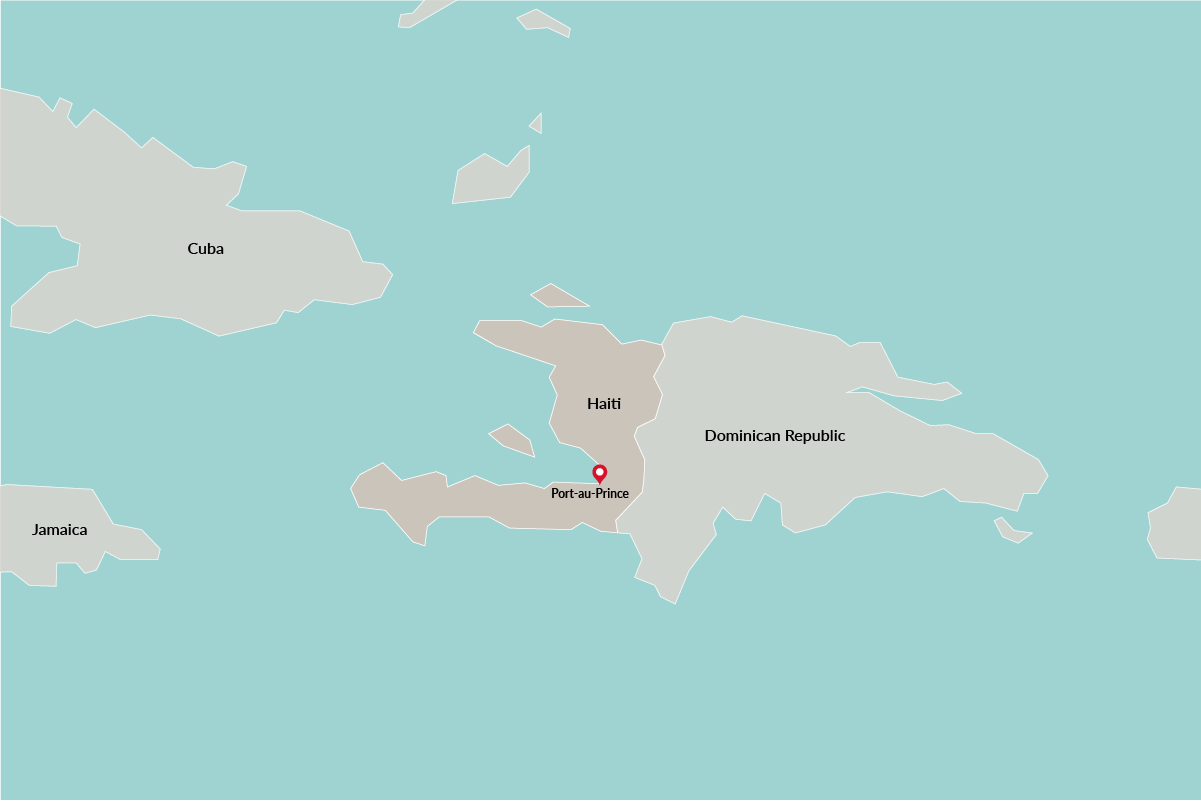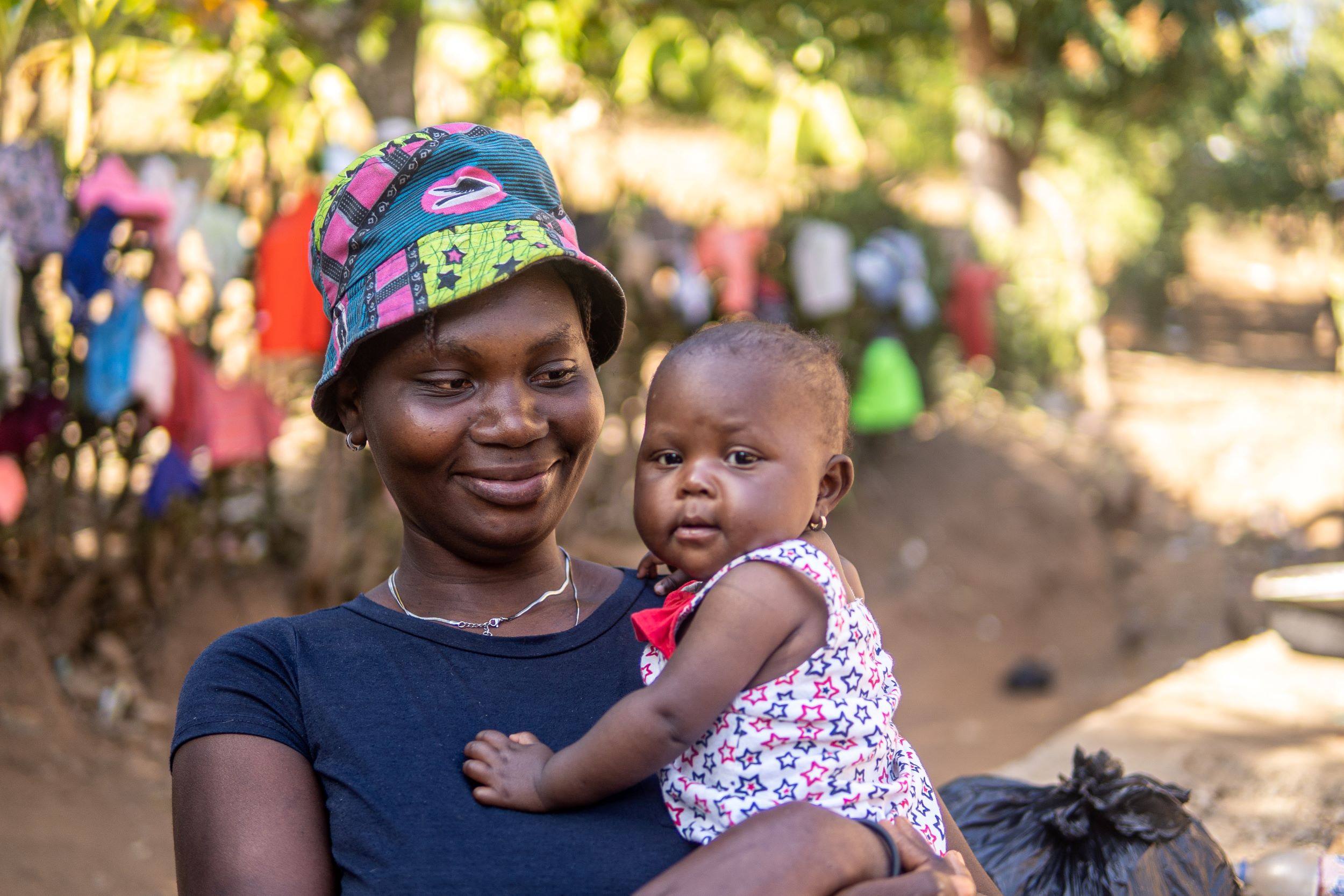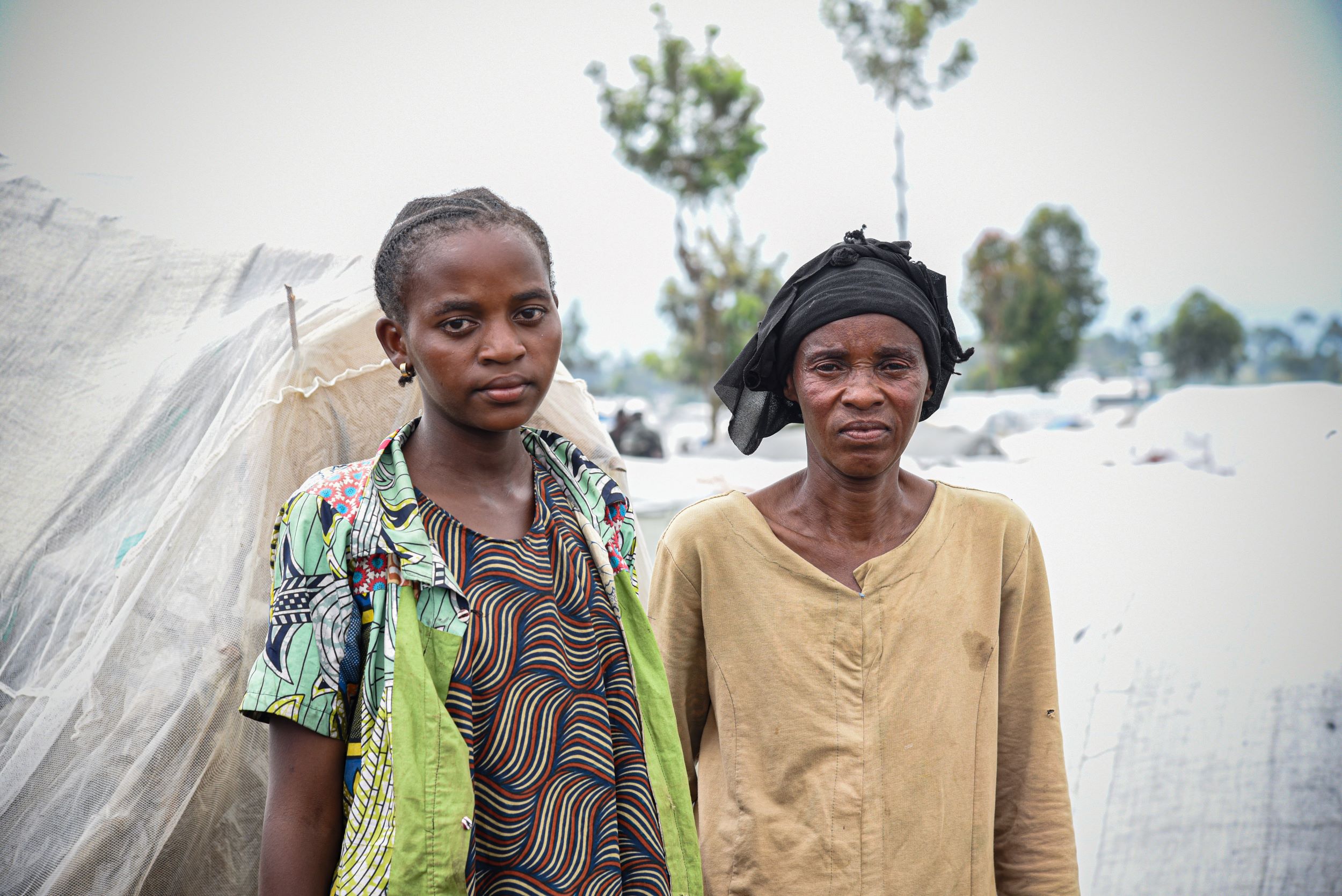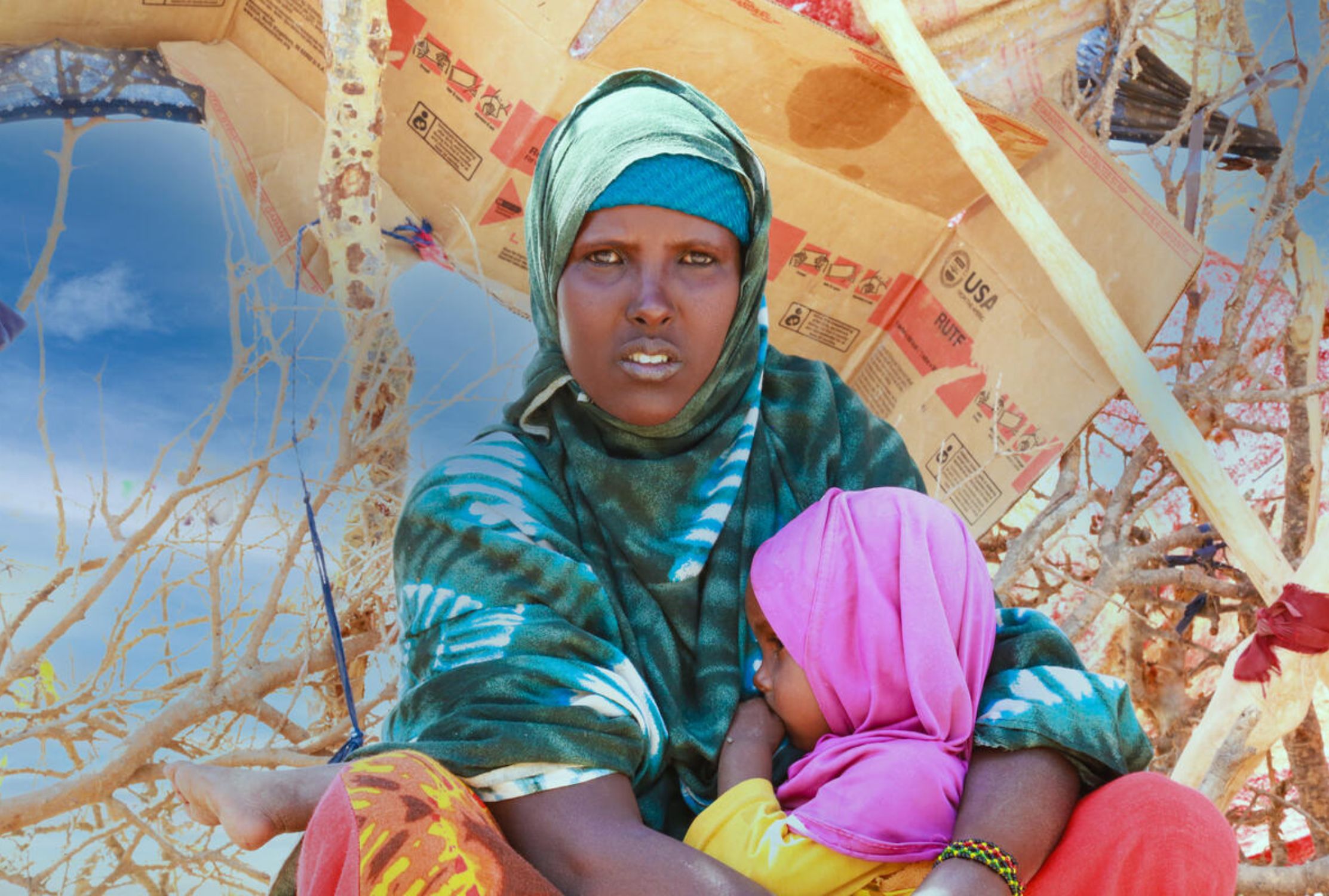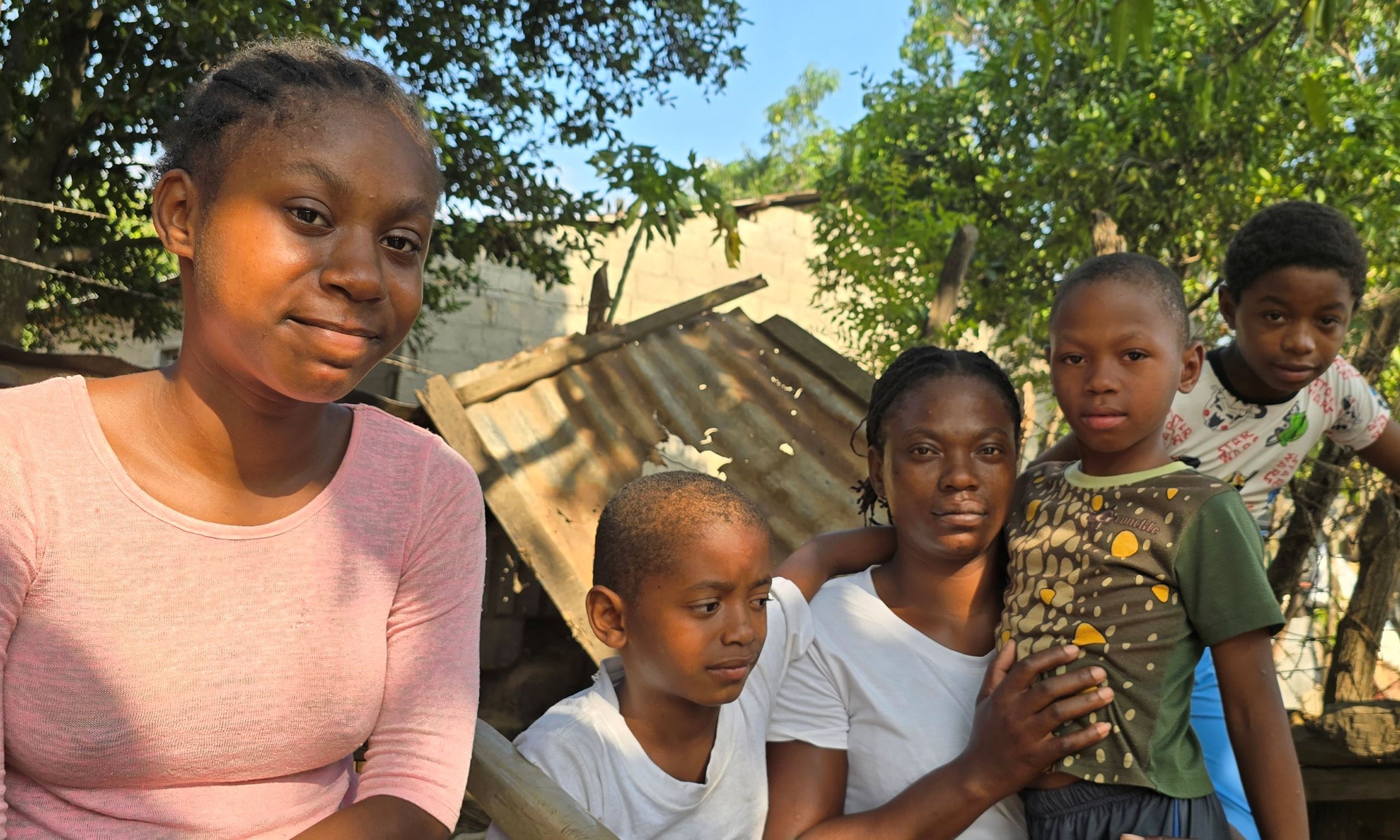
Responding to the Haiti crisis
Stories from Haiti as families struggle to stay safe from violence – and hunger.
Every child should have enough to eat – nutritious food to help them grow healthy and strong. But in countries impacted by violence and conflict, children are going without food and their futures are being put at risk.
Hear about what life is like for two families who have fled Haiti for safety and now face hunger on a daily basis.
Alude’s story
“I am ashamed to admit that many days we don’t have anything to eat,” says Alude, a 29-year-old mother of four. She and her family live in a shack surrounded by piles of old toys and plastic, with no water and no electricity.
Alude, who migrated to the Dominican Republic from Haiti one year ago, was forced from home by ongoing violence and a hunger crisis. Despite her desperate efforts, Alude and her children aren’t getting enough food, and she feels ashamed. Hunger hurts in many ways.

Struggling to feed her family
To earn money, Alude collects waste for recycling, but the small amount she makes from a mountain of plastic, bottles and old toys isn’t enough to feed the six children who depend on her.
That number includes Alude’s two nephews, who recently crossed the border from Haiti. Sudleine, 13, and Jeanfle, 14, walked for days – alone and hungry – to reach their aunt, seeking food and security that they lack back home.
The boys left behind their grandmother. Jeanfle cries as he thinks of her. "There's nothing there,” he says.“How can I help?"
Fleeing violence and hunger
Sudleine and Jeanfle are among the 2,000 unaccompanied children who attempt the border crossing each day. They embarked upon this dangerous journey because the death toll in Haiti’s capital, Port-au-Prince, has been rising rapidly. More than 2,500 Haitians have lost their lives to violence between January and March 2023 – an increase of 53% on the previous three months.
But these brothers weren’t just fleeing violence – they were fleeing famine as well.
UN-backed analysis reveals that almost half of Haiti’s 11 million population is facing hunger. Out of these, over 1.6 million face emergency food insecurity level (IPC4) – one level away from famine.
Not only is there food shortage in Haiti – food prices have also soared. The World Food Programme estimates that the price of a basic food basket has increased 21% since January.
Alude and her family are among those World Vision aims to reach through a bi-national emergency response. Also benefitting from this response is Don Luis and his family.

Don Luis' story
Don Luis, 47, scours the streets for glass, plastic and iron. When he’s collected 300lb of solid waste, he’ll earn just enough money to buy little more than 1lb of rice.
“They are not paying anything for it,” Don Luis says. “In the case of glass, I am paid only one peso [little more than a penny] for every two bottles. It’s impossible to feed 12 mouths from a business that yields so little.”
A growing household
There are usually nine mouths to feed in Don Luis’ household. But the rising violence and hunger crisis in Haiti have increased it to 12. A month ago, three relatives arrived, escaping hunger and violence in Haiti, including five-year-old Jair.
Don Luis’ home reflects the reality of several households along the Dominican border with Haiti: already burdened by poverty and increasingly vulnerable due to the arrival of forcibly displaced populations. A wave of men, women, children – even the elderly – who have been driven away by the crisis.
When Don Luis shared his story, it was almost four o’clock on a scorching hot afternoon. Little Jair – who quietly peeked through an iron gate – had only drunk juice since waking up. Don Luis worried that there wasn’t any food at home. And his concerns grew as he explained that his motorbike had suddenly broken down.
Through World Vision, Don Luis and his family will be able to access nutritional assistance, water sanitation and hygiene (WASH), and psychosocial support.

What’s happening in Haiti?
Haiti has been experiencing increasing levels of gang violence since January 2024. Gangs have taken control of 80-90% of the capital, Port-au-Prince. They now control major transportation hubs and the movement of goods, worsening the hunger crisis.
Attacks on airports, ports, police stations, prisons, schools, hospitals and private homes have occurred non-stop, leading to countless deaths, rapes and kidnappings. The health, education and legal systems in Port-au-Prince are non-operational.
In April, Haiti’s president, Ariel Henry, resigned and a new council was sworn in to lead the country. However, gangs are still operating and ordinary Haitians are getting caught in the crossfire.
READ MORE: Interesting facts about Haiti
How is the violence impacting the people of Haiti?
Right now, an estimated 5.5 million people, including 3 million children are in urgent need of humanitarian aid. Prior to the violence, Haiti was facing political instability and a cholera epidemic, but it’s now experiencing food shortages and limited access to basic services.
“Children are the most affected”
World Vision is deeply concerned for the innocent children caught up in this.
The violent actions of gangs, taking control of vast areas of the capital, Port-au-Prince, have caused basic goods to soar in price.
"The restriction on free mobility, the closure of businesses, and the difficulties in the supply of products is exacerbating hunger in a country where food insecurity and malnutrition is already chronic. Children are the most affected; thousands have no food, several medical centres have closed due to insecurity, and too many have been displaced due to violence," says Joao Diniz, Regional Leader of World Vision in Latin America and the Caribbean.
In addition to hunger, violent gangs have committed acts of sexual violence against girls and women. They have also prevented thousands of children from accessing education.
Forced from home
Since 29 February around 15,000 people have been forcibly displaced, leaving their homes in search of safety. This is in addition to the 362,000 who were already internally displaced.
"Restoring safe conditions to provide humanitarian aid in Haiti is urgent,” says Diniz. “Failure to do so anticipates a deterioration in the living conditions of children and an increase in irregular migration flows of people fleeing extreme poverty, insecurity, and hunger."
Enough for the children of Haiti
World Vision’s response to the crisis in Haiti spans the two nations of Haiti and the Dominican Republic.
Overall, we’re aiming to reach and impact the lives of 540,000 people with food, health and nutrition, protection, mental health, water and sanitation, education, and livelihoods training.
World Vision believes every child and family should have enough food to thrive. Our ENOUGH campaign seeks to end child hunger, including in Haiti.
You can help children living in some of the hardest places have enough to eat today. As a World Vision supporter, you’ll be part of something global, creating greater change and making a long-lasting impact in the lives of children.

